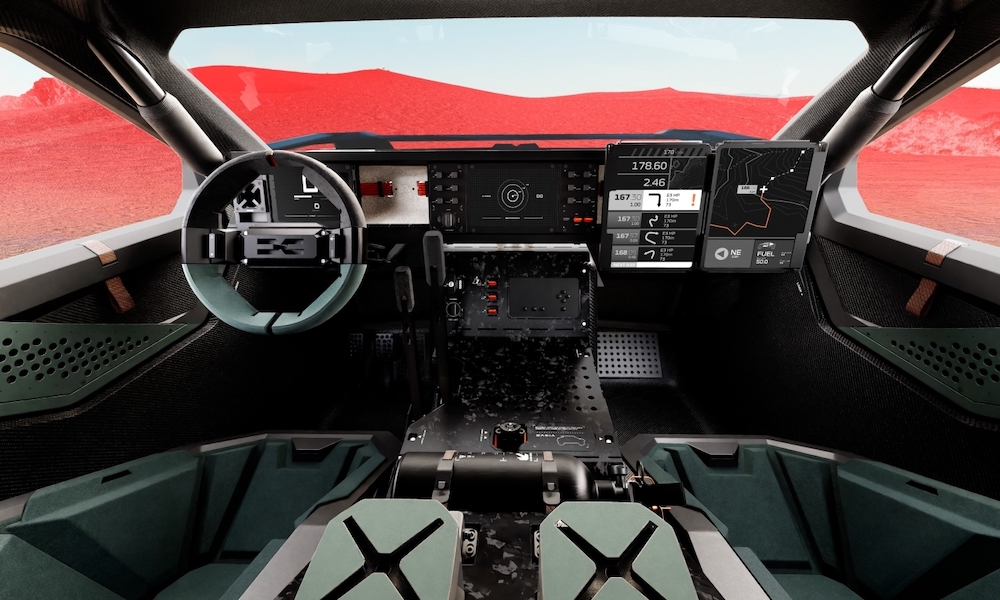Dacia has revealed initial details of its Sandrider rally-raid machine that will bid for overall honours in the Ultimate T1+ class at next year’s Dakar.
The Prodrive-built car will be powered by a 3-litre V6 twin-turbo engine with direct injection, producing a maximum power output of 360bhp to traverse the Arabian desert.
It will have four-by-four drive, with a six-speed sequential gearbox and double wishbone suspension at the front and rear. Suspension travel will reach 350mm over the dunes and the car will run on BF Goodrich 37-inch tyres. Dacia and Prodrive have put emphasis on weight distribution towards the front in a quest for optimal traction.
The Sandrider will run on synthetic fuel from Aramco that combines hydrogen with sequestered carbon dioxide to reduce carbon emissions. Unlike the Audi RS Q e-tron that won this year’s Dakar, the Dacia does not have an electrified powertrain.
Dacia says that the aerodynamics are being developed with fuel efficiency in mind, claiming a 10 per cent reduction in drag and 40 per cent less lift compared to similar rally-raid prototypes. It has also focused on keeping the car light, utilising a tubular chassis and carbon fibre body panels.
The design shown in render images is no-frills, but demonstrates Dacia’s aim to propound its road car brand philosophy of essentialism. Ergonomic features for the drivers include a modular dashboard for individual adjustment, anti-reflective paint at the top of the windscreen to improve visibility, and a short bonnet that helps with field of view.
Testing is set to commence shortly and Dacia plans to give the Sandrider its competition debut in October, at the final round of this year’s FIA World Rally-Raid Championship in Morocco. That event will be crucial in the Renault brand’s preparation for its first attempt at outright Dakar glory in January 2025.
Nine-time FIA World Rally champion Sebastien Loeb, five-time Dakar winner Nasser Al-Attiyah and 2022 Extreme E champion Cristina Gutierrez will drive each of the three cars.
Click Here to Read the Full Original Article at Racecar Engineering…

